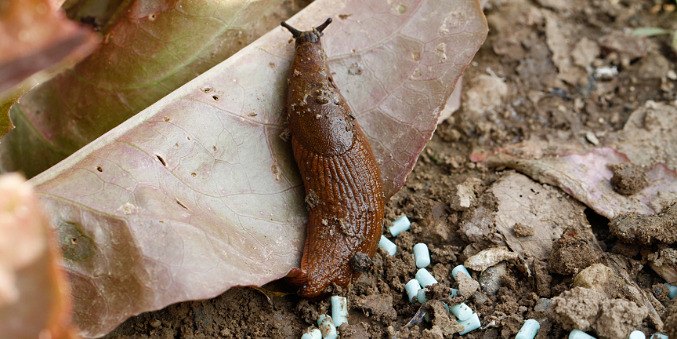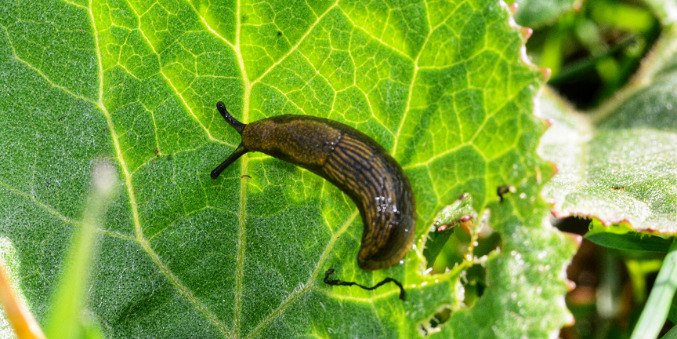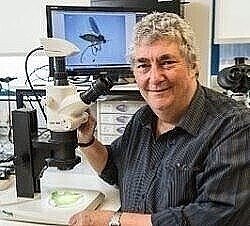
Which slugs are good for the garden?
2 Minute Read
Dr Ian Bedford tells us everything we need to know about the 'bug of the month' for May, slugs.What are slugs?
Over the many centuries that plants have been grown in gardens for pleasure, or as food crops, there have been efforts to protect them from the damage caused by a diverse range of animals that feed on them. The animals that we collectively call plant pests.Probably the most ubiquitous and easily recognised animals within this group of plant pests, will be the terrestrial slugs. Terrestrial slugs are assumed to have evolved from snails around 150 million years ago and have always had an essential role to play within habitats where the majority of species consume dead organic matter and recycle nutrients back into the soil.
This is currently the case with the slugs that reside here in Britain, where around 70% of species are detritivores that feed on decaying organic matter, fungi, and moulds (the reason why many slugs are often found in and around compost bins). In addition, a small number of native slugs are predatory, such as the Shelled slug, and the Leopard slug which will attack other slug species.
Consequently, it means that there are only a very few slug species that actually feed on living plant material, but it’s these herbivorous slugs and their nocturnal activities, that have led to the common assumption that all slugs are plant pests. It’s the reason why slugs in general, are so often eradicated by gardeners without realising that the vast majority of them, particularly the larger slugs are actually beneficial to the environment.

How to control slugs in the garden
Knowing that so many of Britain’s native slugs are important, beneficial species within the environment (a fact that has now been endorsed by the Royal Horticultural Society), what should gardeners and growers be doing to protect their plants from just the plant-eating slug species?
Although slug pellets are still a popular option and readily available to purchase, only those that contain Ferric Phosphate are now legal to use. Those containing the toxic chemical Metaldehyde were withdrawn from the market in 2021 and have been illegal to use since 1st April 2022. So, it’s strongly advised that gardeners check the labels on old slug pellet containers and dispose of any that contain Metaldehyde at a local recycling centre when they have an amnesty day.
However, even though Ferric Phosphate-based slug pellets are still available and legal to use, they are not selective and will unfortunately kill the beneficial slug species that feed on them. The same applies to beer traps, which will attract and drown beneficial species.

How to protect beneficial slugs
In order to protect the beneficial species within a garden, a non-lethal option would have to be used, which effectively deters, repels, or blocks the plant-eating slugs from accessing and feeding on susceptible plants.
Many products that create ‘Physical Barriers’ to slugs are now available for gardeners to buy and use in their gardens that will protect specific plants whilst ensuring that slugs remain alive for the many garden creatures that depend on them as food.
However, deterring, blocking, or repelling slugs from plants might not always be possible under certain situations, particularly where the slugs are feeding on roots and tubers within the soil. So, in this case a more hands-on approach would be needed, one that requires recognising the plant-eating slug species and then manually removing them as and when they are found. A task that isn’t as daunting as it might first seem.

Which slugs usually cause damage to plants?
The most problematic native slugs within gardens will invariably be one of just two species, both of which are relatively small slugs, growing to about 2.5 cm in length when fully extended. The Black Garden slug (Arion hortensis) with its black body and orange underside and the Grey Field slug (Deroceras reticulatum) which is white or pale buff in colour with darker blotches on its body.
Both of whom could be controlled within the areas of the garden where they’re causing a problem, simply by placing damp cardboard on the soil amongst the affected areas overnight. The slugs can then be found resting underneath the cardboard in the morning from where they can be collected and removed manually, sometimes in their hundreds!

About Dr Ian Bedford
Ian has been fascinated by the bug world for as long as he can remember. From studying butterflies on the South Downs as a youngster, he went on to pursue a career in Research Entomology and ran the Entomology Dept at the John Innes Centre in Norwich up until his recent retirement. Ian now works as an independent entomologist offering advice to companies developing environmentally safer plant protection products.find out more
Comments (0)
Why not be the first to send us your thoughts?
Leave A Comment
Most popular articles
1
Plastic plant pots dimensions and uses2
Peat vs Peat Free - Choosing the right Potting Compost3
How to Grow Watercress at home in plant pots4
January Jobs5
March Jobs